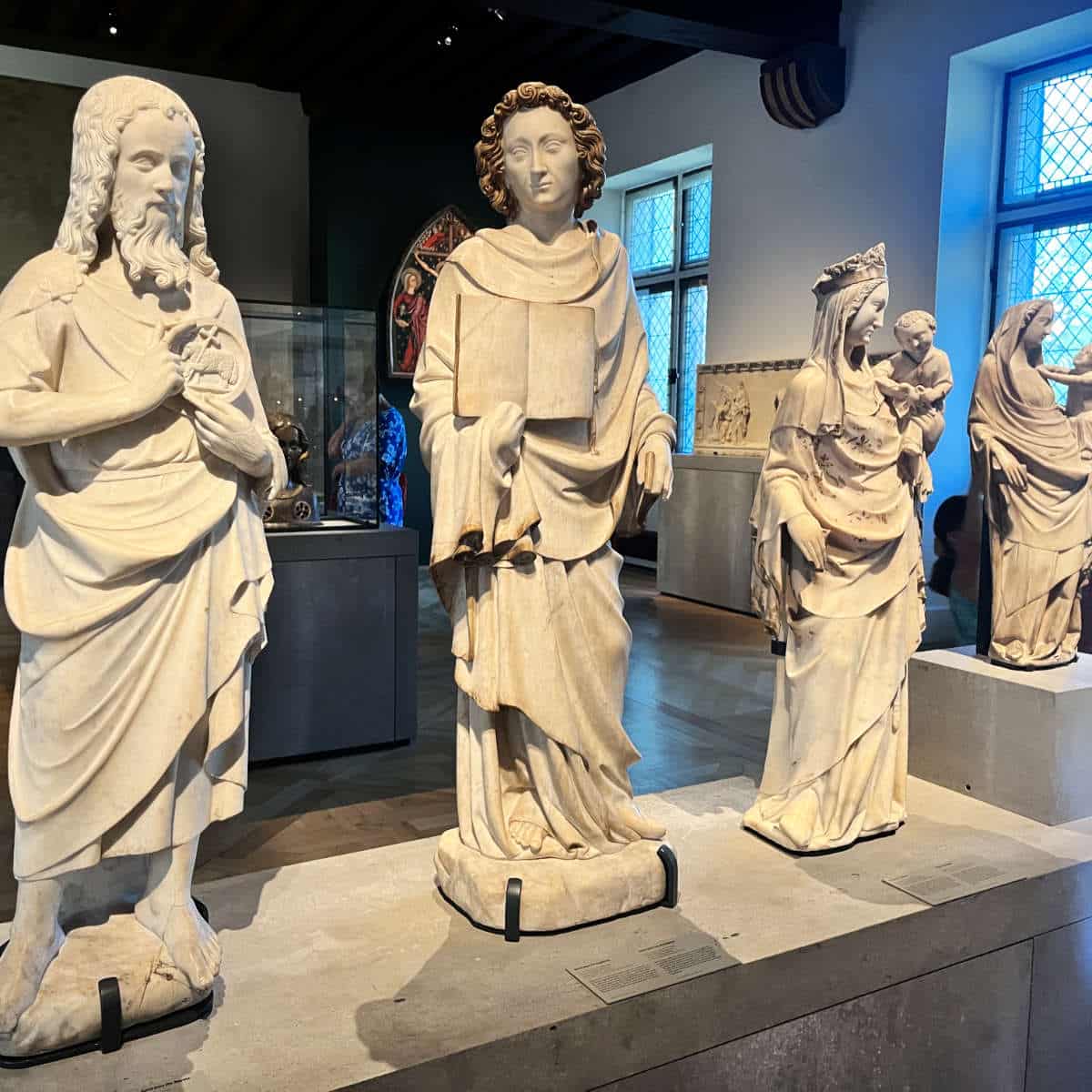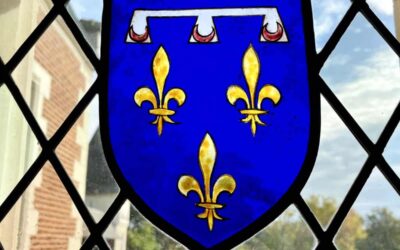As you gallivant through the delightful tapestry of France’s history, you’ll find it peppered with a divine dashes of religious influence. So as you travel around France, you won’t be surprised to notice that many of the country’s landmarks are named after its Catholic saints.
The country was at the forefront of the spread of christianity in Western Europe, and many of the France’s patron saints date back to those earliest days when the Catholic church was starting to take hold.
There is the ever-popular Saint Joan of Arc, who strode onto the battlefield in full armor, defying gender norms and hearing God’s voice that told her to lead the French army. Talk about divine fashion sense.
Then there’s Saint Denis, known for his peculiar penchant for carrying his own severed head around like an accessory. With stories passed down from generation to generation, these French saints remain widely recognized and their legends having stood the test of time.
Even today, Toussaints (All Saints’ day) is an official holiday in France. So let’s get the facts about the most famous French saints, shall we? Allons-y!
- 1. Saint Joan of Arc (1412 – 1431)
- 2. Saint King Louis IX (1214 – 1270)
- 3. Saint Denis (3rd century)
- 4. Saint Bernadette Soubirous (1844-1879)
- 5. Saint Genevieve (419 – 512)
- 6. Saint King Clovis I (466 – 511)
- 7. Saint Queen Clotilde (475 – 548)
- 8. Saint Rémi (437-533)
- 9. Saint Germain l'Auxerrois (378-448)
- 10. Saint Martin de Tours (316-397)
- 11. Saint Joan of France (1464 – 1505)
- 12. Pope Gregory XI (1329-1378)
- 13. Saint Malo d'Aleth (520-621)
- 14. Saint Maximus of Aix (1st century)
1. Saint Joan of Arc (1412 – 1431)
In the midst of the 100 years’ war between England and France, a young maid named Jeanne d’Arc (Joan of Arc) would capture the imagination of France.
Born to a relatively poor family, the young girl said that she received visions of the archangel Michael instructing her to support the French King Charles VII from the English.
Nicknamed la Pucelle d’Orléans (the maid from Orléans), she arrived in the French court at 17 years-old, dressed as a male soldier and made a strong impression on the King, whose armies were rapidly weakening.
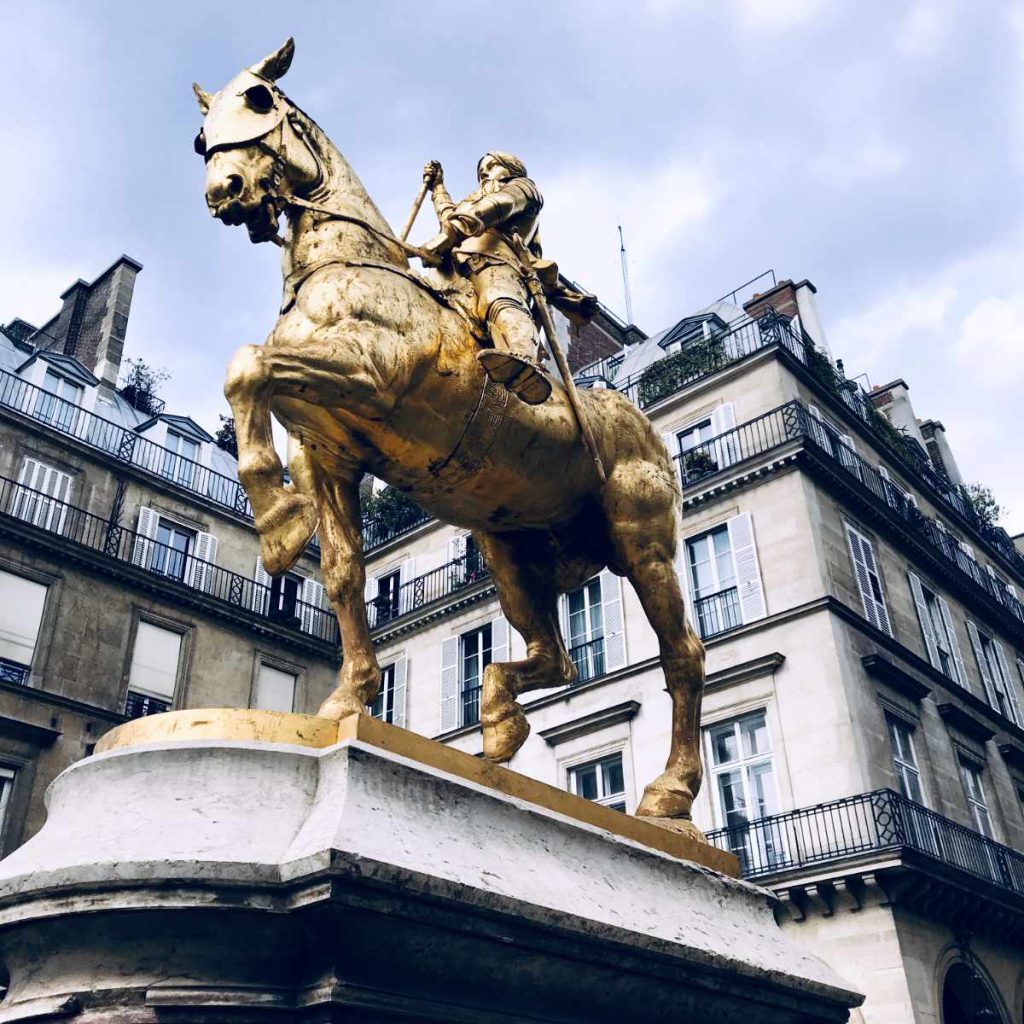
The French King sent Joan on a series of battles, along with the Scots with whom the French had formed the Auld Alliance. A deeply religious woman, Joan was able to lead the French army to victory, with her appearance effectively turned the war over territory into a religious war.
On 23 May 1430, she was captured in Compiègne in the North of France by a group of French nobles from Burgundy, who were allied with the English. She put on trial by the pro-English bishop Pierre Cauchon on a variety of charges, including cross-dressing and heresy.
After being declared guilty, she was burned at the stake on 30 May 1431 in Rouen, dying at about 19 years-old.
She was declared a martyr, and in the 18th century made a symbol of France by Napoleon Bonaparte. In the 20th century, she was canonized by the Roman Catholic Church and made one of the patron saint of France. (Her legacy however, has been usurped by the ultra-right movement today in France.)
2. Saint King Louis IX (1214 – 1270)
King Louis IX was the son of Blanche de Castille, and inherited the throne at the age of 12 when his father Louis VIII died.
Louis was a very pious man and he was rich. He purchased what is purported to be the Crown of Thorns that Jesus wears while on the cross from the Emperor of Constantinople (today Turkey).
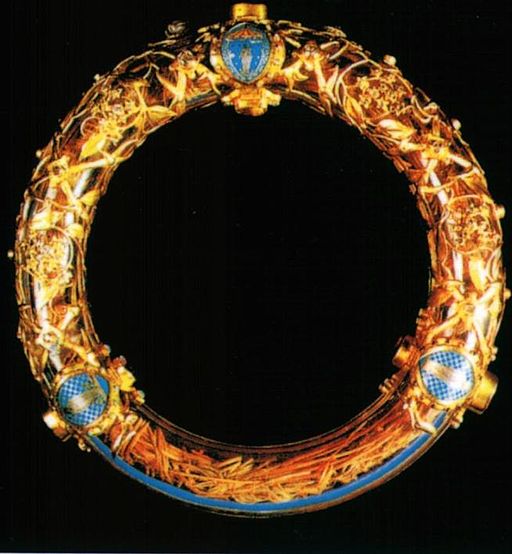
For this and his many crusades to the Middle East, he is the only king of France to be canonized in the Catholic Church.
Saint Louis’ crown of thorns was held in Notre Dame de Paris Cathedral and was rescued from the 2019 fire. (It is currently in a secure location, until it can be restored to the Cathedral.)
From schools to buildings, there are several things named after Saint Louis in France. The island “Ile Saint Louis” in Paris is named after him, as well as several bridges, cathedrals, and more. The city of St. Louis in the United States is also named after Saint King Louis.
3. Saint Denis (3rd century)
Saint Denis was the Bishop of Paris in the 3rd century. His name is sometimes written as “Denys” It is not known exactly when he was born or when he died. He is venerated in the Catholic Church as the patron saint of France and Paris and is accounted one of the Fourteen Holy Helpers.
The 6th century historian Gregory of Tours states that Denis was bishop of the Parisii and was persecuted by Roman Emperor Decius and beheaded by a sword.
Local tradition holds that Saint Denis then carried his own head up the hill before he died. As such, statues of him are often depicted holding his head in his arms.
For Christian pilgrims and the devout, the name Montmartre comes from the legend of Saint Denis, who was beheaded by the Romans in the 3rd century BC, along with his companions Saint Rustique and Saint Éleuthère.
In the early days, there was no formal canonization, but was regulated by the bishop of the diocese who decided who was a saint or not.The name became “‘Mont des Martyrs” or “mountain of martys”, and then Montmartre.
The city of Saint-Denis is named after him just north of Paris. In addition, the Basilique Cathédrale de Saint-Denis is one of the most famous churches and cathedrals in France.
4. Saint Bernadette Soubirous (1844-1879)
In 1858, a 14-year-old poor peasant girl named Bernadette Soubirou thought she had visions of an apparition in a grotto near her family home. Based on her recountings, the townspeople thought it was of the Virgin Mary.
For a period of 14 days she went to the grotto and saw daily visions, which came to be known as la Quinzaine sacrée, meaning “holy fortnight”.
Bernadette would go on to to become Saint Bernadette of Lourdes, and the village she was born in would become one of the the world’s most important sites of Christian pilgrimage.
Having been ill as a child, she retired to the Sisters of Charity in Nevers where she eventually died at the age of 35. Soubirous was canonized by Pius XI on 8 December 1933.
The spring from the grotto is believed to have healing properties, and close to 5 million people are believed to visit the site at Sanctuary of Our Lady of Lourdes every year.
5. Saint Genevieve (419 – 512)
During the 5th century, the Roman empire was gradually decreasing in influence due to the increasing Frankish invasions (a Germanic tribe). At the time, lived an ordinary woman from Nanterre, called Genevieve who saw God and became a nun at 15. She would slowly become renowned for her piety and her visions.
In 451 AD, the city was threatened by the army of Attila the Hun, which had pillaged Treves, Metz and Reims. Parisians were planning to abandon the city, but they were persuaded to resist by Geneviève who led a prayer-marathon to divert the Hun army.
When the Huns diverted to Orléans instead, Geneviève was proclaimed a heroine. During subsequent attacks and sieges, it was Geneviève who would negotiate between the armies, looking out for the people of Paris.
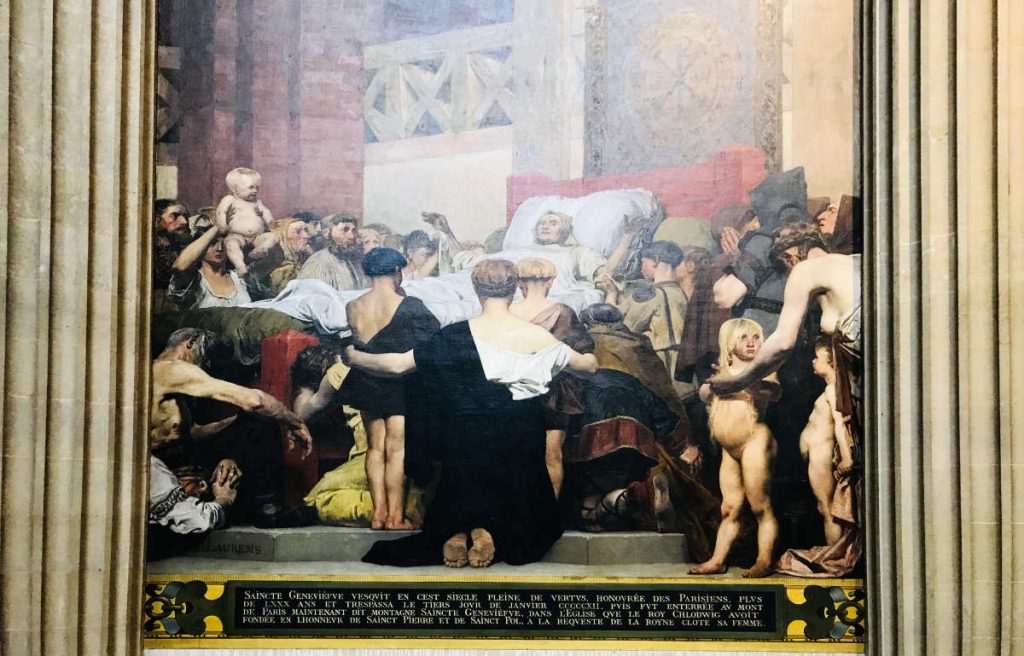
She would go on to counsel Clovis I, the first King of France to convert to Christianity and make Paris his base. Cannonized after her death, Saint Genevieve is even today considered the protectrice of Paris.
The Panthéon in Paris was originally intended to be a temple dedicated to her. While the Pantheon ended up being converted into a tribute for the great thinkers and visionaries of France, there is a church dedicated to her in Paris.
Located on the Montagne Sainte-Geneviève next to the Panthéon, is the Saint-Étienne-du-Mont church which replaced an earlier church in the 5th century. It is here that Sainte Geneviève was reburied.
According to tradition, Saint Geneviève used to come there to pray and taking a path that became rue de la Montagne-Sainte-Geneviève. There are statues of her in several locations around Paris, including one in the city’s town hall.
6. Saint King Clovis I (466 – 511)
Clovis I was the first king of the Franks to unite all of the Frankish tribes under one ruler in 481 AD, and ensuring that the monarchy was passed down to his heirs, as part of the Merovingian dynasty in France.
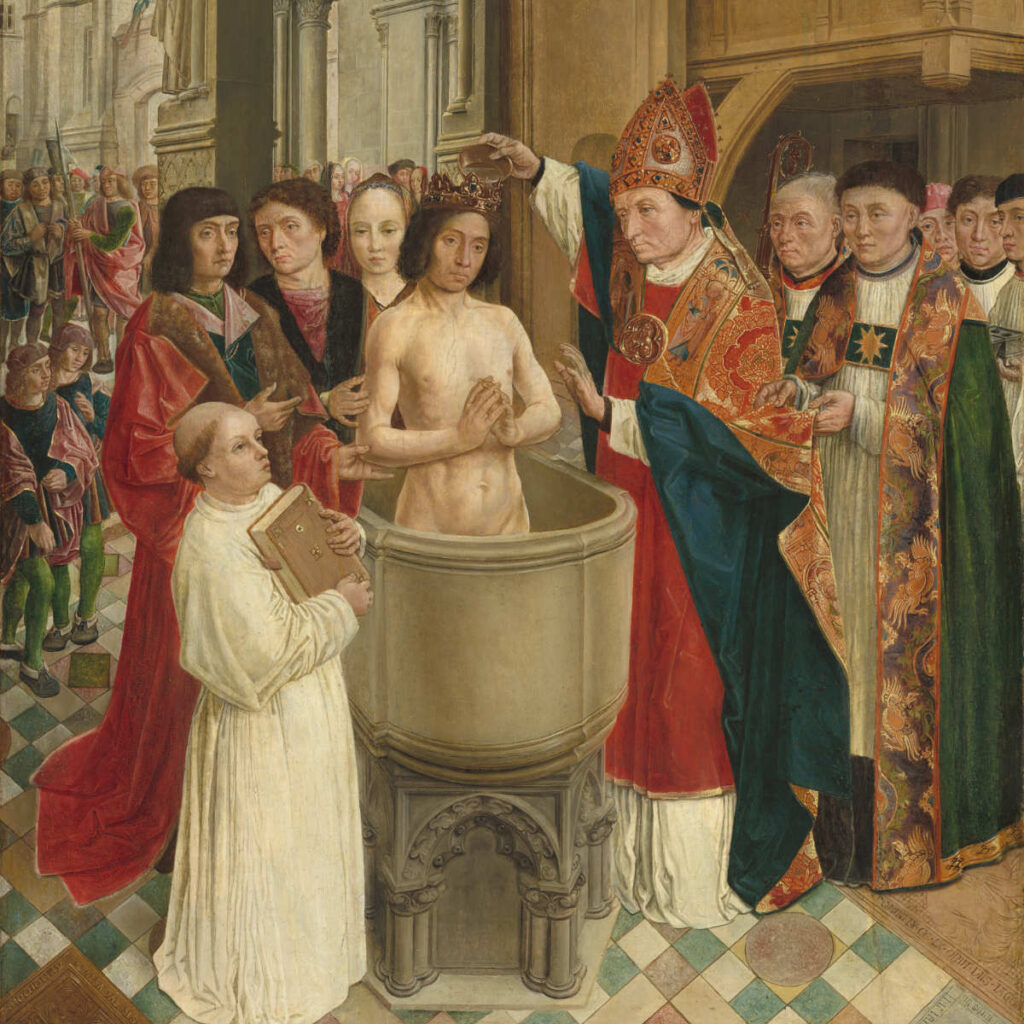
Importantly, Clovis converted to Christianity on the urging of his wife Clothilde and Saint Genevieve. For this, he was proclaimed a saint by the Catholic church.
It is Clovis I who establishes Paris his capital in 508AD on Ile de la Cité, because of its strategic position on the River Seine. He also is believed to have made the fleur de lys a symbol of the French monarchy.
7. Saint Queen Clotilde (475 – 548)
In 493AD, Clovis decided to marry a local princess named Clotilde who was from Lyon. Importantly, Clotilde was Catholic, which was unusual at the time, as paganism and arianism were the popular religions.
And because Clotilde was Catholic like the Romans, this ensured that Clovis became Catholic. This meant that he had the support of the Byzantine – Eastern Roman Empire who were also Catholic in his wars against his rivals.
Their marriage was considered an important union in Christianity. By the 6th century, the marriage of Clovis and Clotilde was made the theme of various stories, songs, and ballads. Clothilde is also considered one of the most important saints in France, along with her husband.
8. Saint Rémi (437-533)
Saint Rémi, after whom the city of Reims is named, was the bishop who baptized Clovis into Christianity. He is sometimes also referred to as Remigius.

King Clovis granted Rémi powers over stretches of territory, in which he established many churches. He erected chuches in several towns around France like Tournai, Cambrai, Thérouanne, Laon, Arras, and even installed his brother Principius as Bishop of Soissons.
9. Saint Germain l’Auxerrois (378-448)
There are several saints named Saint Germain, but the most well-known in France is Saint Germain l’Auxerrois (often called Germanus of Auxerre). He was a Roman clergyman who was bishop of Autissiodorum which is today the city of Auxerre, after the Roman conquest of Gaul.
He was born into a rich family, one of the noblest in Gaul. He became government lawyer but gave that up to become a clergyman and convert the local Franks to Christianity.
It was during his first trip to Nanterre that he met a little girl aged 10, who would become Saint Geneviève. Germain would make his way to the British Isles, converting the people there to the Catholic church. Germain is also said to have led the native Britons to a victory against Pictish and Saxon raiders in North Wales.
(Note: Saint Germain d’Auxerre is not the same as “Saint Germain de Paris” or “Germain d’Autun” who is one of the saints of Paris.)
10. Saint Martin de Tours (316-397)
Saint Martin was the local Bishop of Tours from the 3rd century who is heralded as one of the patron saints of France.
At the age of 18, he experienced a vision, called the “Legend of the Divided cloak” which became the most-repeated story about his life. One day as he was approaching the city of Amiens, he met a poor beggar. He impulsively cut his cloak in half to share with the man. When Martin woke, he found his cloak restored to wholeness.
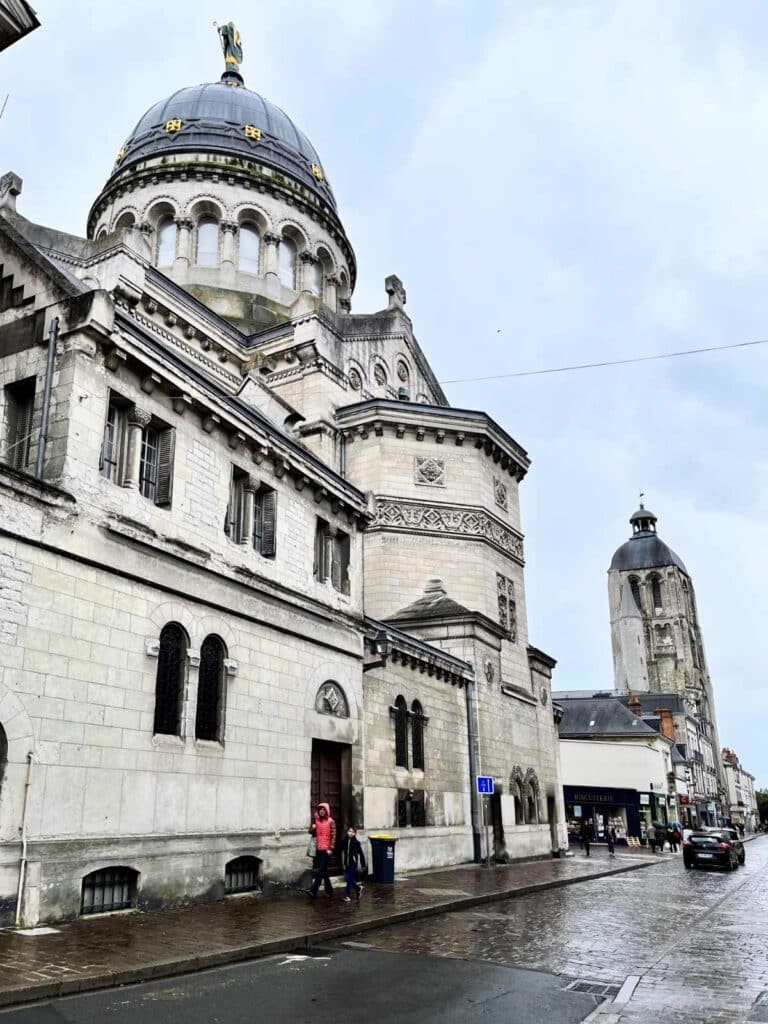
As bishop, he was active in the suppression of any pagan Gallo-Roman religions, but he opposed their violent persecution. Known as Martin the Merciful, he converted to Christianity at a young age and was later sanctified.
11. Saint Joan of France (1464 – 1505)
Joan of France was a royal princess who was the second daughter of King Louis XI of France and of his second wife Charlotte of Savoy. At a time when women were not allowed to ascend to the throne in their own name, so even though her father did not have any sons, she could not claim the throne.

Instead she was married at the age of 12 to her cousin, the future King Louis XII, (at the time Duke of Orléans) in the small town of Montrichard, France.
It was a scandalous story in its day as Louis XII famous had the marriage annulled later, in order to marry Anne of Brittany (a much richer bride) by arguing that Joan was sterile and hunchbacked. Joan fought back, providing proof in court but ultimately lost.
After the annulment was granted by the Pope, Joan was made Duchess of Berry and retired to monastic life. She started the Order of the Annunciation of the Blessed Virgin Mary, of which monasteries exist today around the world.
After she died in 1505, her body was buried in the chapel of the Annonciade monastery. In 1562 during a raid by Protestant Huguenots, her body was found to be incorrupt and was burned by the Huguenots.
Soon after her death, miracles and healings attributed to her were said to have occurred. She was beatified her on 21 April 1742 and canonized on 28 May 1950 by Pope Pius XII.
12. Pope Gregory XI (1329-1378)
Born Pierre-roger De Beaufort, he would become better known as Pope Gregory XI. At the time,
At the time French King Philippe le Bel (Philip the beautiful) had “convinced” the Catholic popes that they should reside in Avignon, instead of in Rome. Avignon was part of the Kingdom of Arles and the Holy Roman Empire, not France. It was, however, much closer to Philippe than the Vatican was, and easier for him to control.
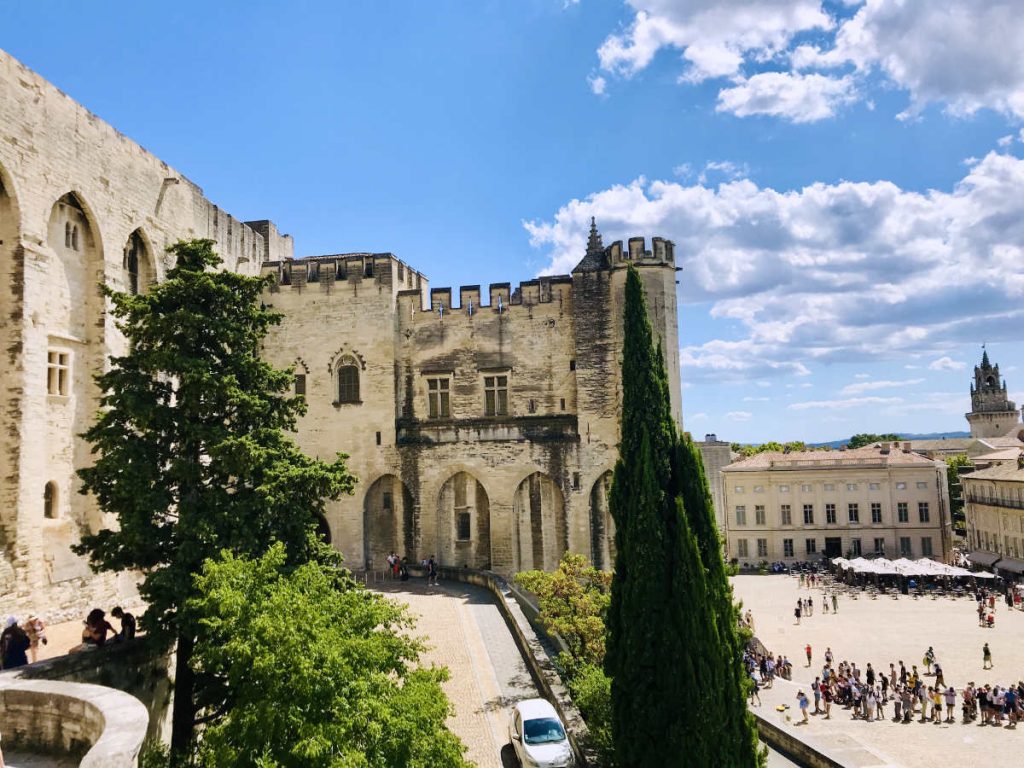
Known as the Avignon papacy, 7 popes resided in Avignon for a period of 73 years, building castles and fortresses and bringing much wealth in the area.
For the young De Beaufort, it was his uncle, Pierre Cardinal Roger, Archbishop of Rouen, who was elected pope in 1342 under the name Clement VI.
De Beaufort would eventually become pope himself, as Pope Gregory XI. He immediately attempted to reconcile the Kings of France and England, and the different Italian states to bring peace. In 1377, Gregory XI moved the papacy back to its former seat of power of Rome bringing an end to the Avignon papacy.
13. Saint Malo d’Aleth (520-621)
Saint Malo d’Aleth is one of the 7 founding saints of Brittany. His name comes from the celtic language of Old Breton and he is also known as Maclou or Maloù or in Latin as Maclovius or Machutus.
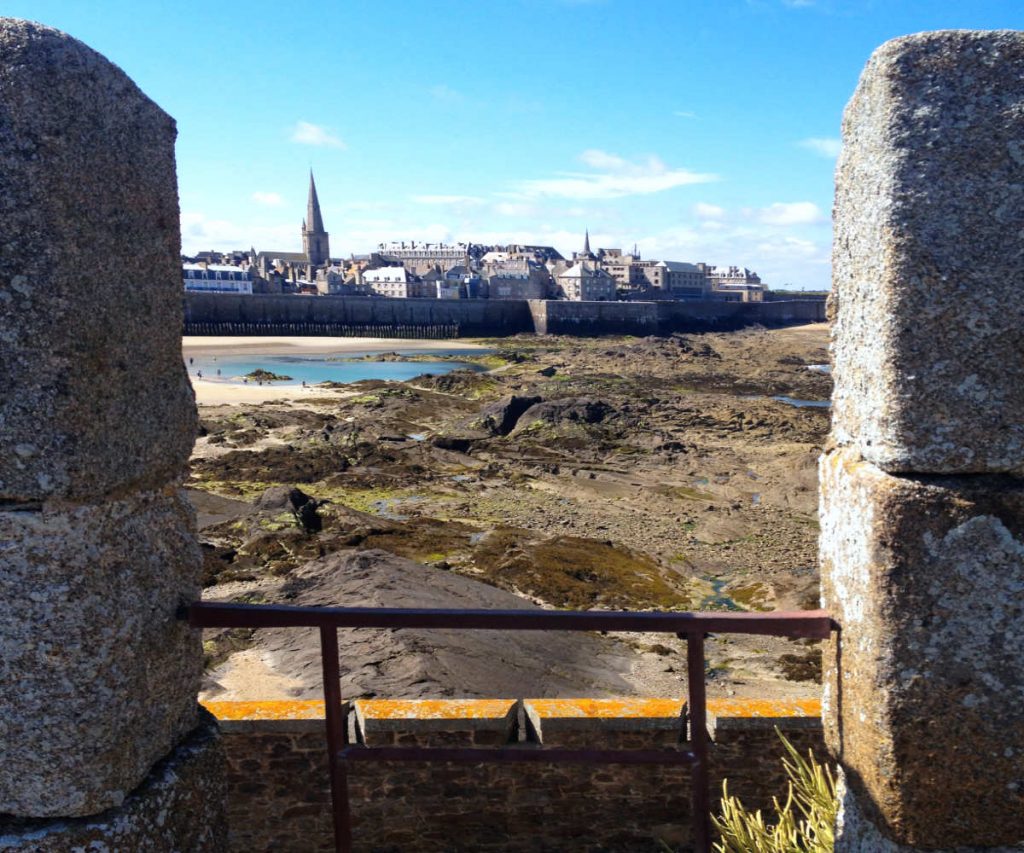
It is believed that Malo d’Aleth came across the English channel from his native Wales to Brittany in the 6th century. He brought Christianity to the region, building many churches in the area.
He was said to have been the first bishop of the town of Aleth, currently known Saint-Servan which is now part of the town of Saint-Malo in Brittany.
14. Saint Maximus of Aix (1st century)
Saint Maximus of Aix was the legendary 1st Bishop of Aix-en-Provence in the 1st century.
According to the Christian tradition, the first church in was founded by Saint Maximinus, who arrived in Provence from Bethany, a village near Jerusalem, with Mary Magdalene on a boat belonging to Lazarus around 40 or 44AD.
The local legend is that from there Mary is said to have gone to Marseille, eventually being buried in nearby Saint-Maximin-la-Sainte-Baume, and her sister Martha is said to have gone on to Tarascon to perform miracles there.
Lazarus went on to become the first bishop of Marseille and Maximin became the first bishop of Aix-en-Provence.

If you enjoyed that article, you may like to read more about other famous people in France. A bientôt!
